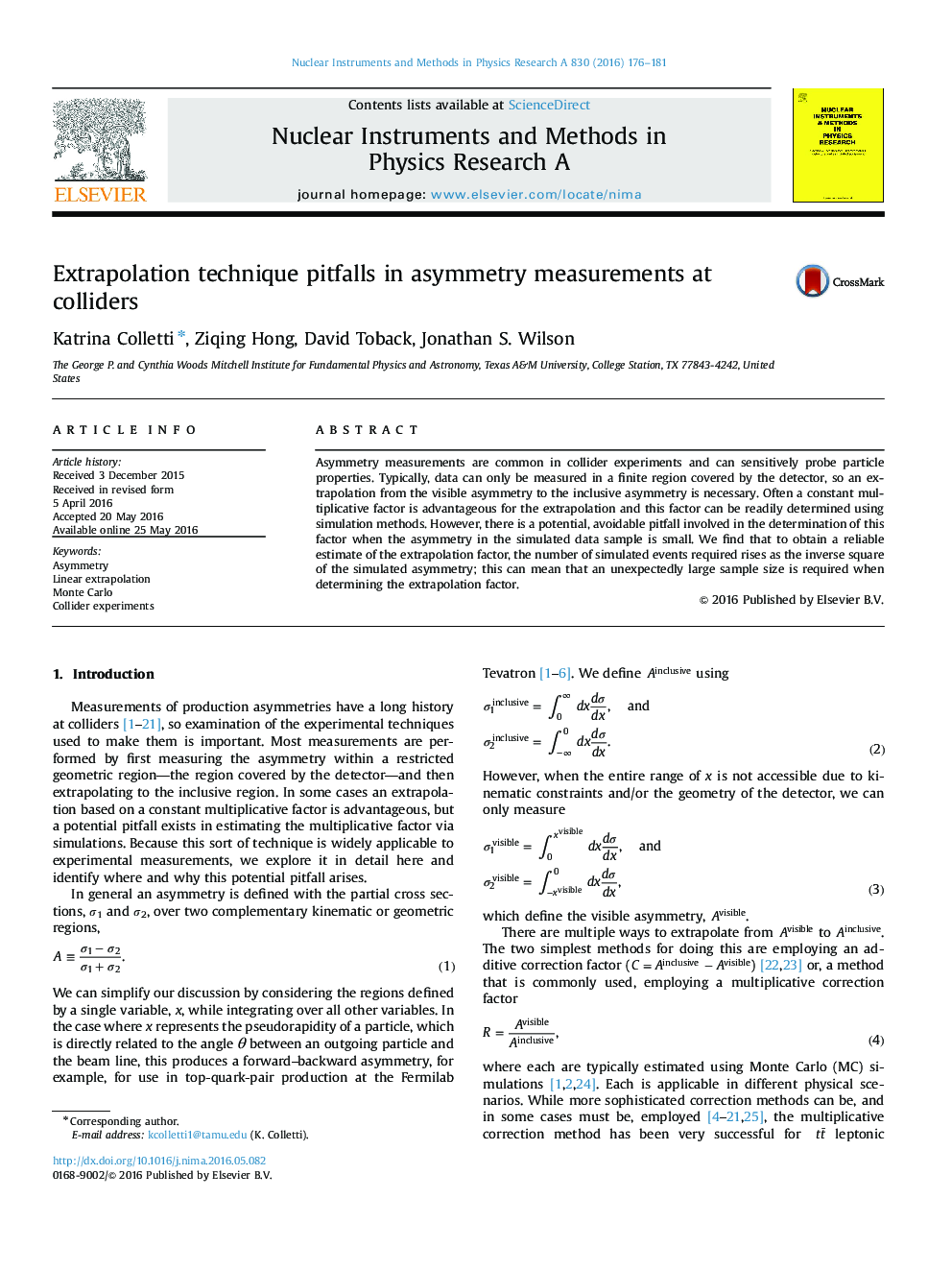| Article ID | Journal | Published Year | Pages | File Type |
|---|---|---|---|---|
| 8168928 | Nuclear Instruments and Methods in Physics Research Section A: Accelerators, Spectrometers, Detectors and Associated Equipment | 2016 | 6 Pages |
Abstract
Asymmetry measurements are common in collider experiments and can sensitively probe particle properties. Typically, data can only be measured in a finite region covered by the detector, so an extrapolation from the visible asymmetry to the inclusive asymmetry is necessary. Often a constant multiplicative factor is advantageous for the extrapolation and this factor can be readily determined using simulation methods. However, there is a potential, avoidable pitfall involved in the determination of this factor when the asymmetry in the simulated data sample is small. We find that to obtain a reliable estimate of the extrapolation factor, the number of simulated events required rises as the inverse square of the simulated asymmetry; this can mean that an unexpectedly large sample size is required when determining the extrapolation factor.
Related Topics
Physical Sciences and Engineering
Physics and Astronomy
Instrumentation
Authors
Katrina Colletti, Ziqing Hong, David Toback, Jonathan S. Wilson,
